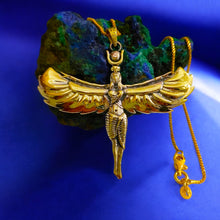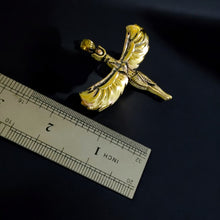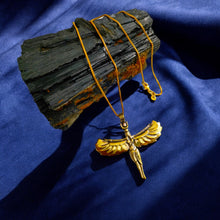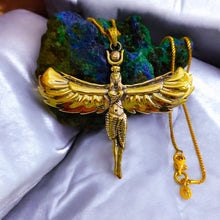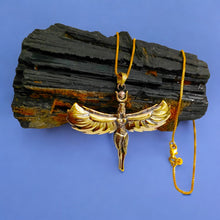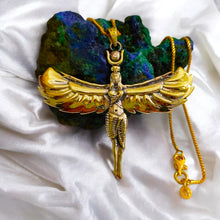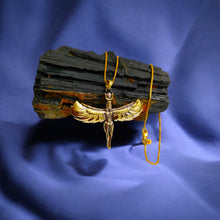
The Goddess Isis Gold Pendant Necklace symbolizes ancient Egyptian deity Isis, revered for wisdom and magic. Crafted to honor her legacy, it blends timeless elegance with spiritual significance, embodying a rich cultural heritage in its design.
- History: Inspired by ancient Egyptian mythology, symbolizing the goddess Isis.
- Spiritually: Represents fertility, motherhood, and protection.
- Talisman: Believed to bring luck and ward off negative energy.
- Handmade: Crafted with care and attention to detail.
- Healing: Thought to promote emotional well-being and inner strength.
- Material Gold: Made of high-quality gold for durability and elegance.
- Symbolism: Reflects power, femininity, and divine energy.
- How to Wear: Easily fits any chain up to 5mm in thickness for versatility.
- Ideal Gift: Perfect for those seeking meaningful jewelry with a touch of ancient mystique.
History Side For Those Who Are Interested
Isis, also spelled as "Aset" in ancient Egyptian, is one of the most prominent goddesses in ancient Egyptian mythology. She is widely known as the goddess of motherhood, magic, fertility, and protection. The history of Isis dates back to the earliest periods of Egyptian civilization, with her worship extending throughout the ancient world.
The origins of Isis can be traced to predynastic Egypt, where she likely evolved from local fertility and mother goddesses. However, her cult grew significantly during the Old Kingdom period (circa 2686–2181 BCE), with temples dedicated to her found in various parts of Egypt. During this time, she was often depicted as a nurturing mother, associated with the protection of children and the deceased.
Isis gained prominence during the Middle Kingdom (circa 2055–1650 BCE), as her cult expanded beyond Egypt's borders into neighboring regions. She became increasingly associated with magic, healing, and resurrection, particularly through her connection with the Osiris myth. According to legend, Isis was the wife of Osiris, the god of the afterlife, who was murdered by his jealous brother Set. Isis searched for Osiris's body, reassembled it, and revived him, thus symbolizing the power of rebirth and eternal life.
During the New Kingdom (circa 1550–1070 BCE), Isis's cult reached its zenith, and she became one of the most widely venerated goddesses in Egypt. Temples dedicated to her were constructed throughout the country, and her influence extended into various aspects of Egyptian life, including royalty, magic, and religious rituals. Isis was often depicted with wings, symbolizing her role as a protective deity who could soar above mortal concerns.
The worship of Isis continued into the Greco-Roman period, as Egypt came under the influence of foreign rulers. Her cult spread throughout the Mediterranean world, particularly in Greece and Rome, where she was syncretized with various local deities. Isis became associated with other goddesses, such as Demeter and Aphrodite, reflecting her adaptability and widespread appeal.
The influence of Isis persisted into the Christian era, with some aspects of her worship adopted by early Christian communities. However, as Christianity became the dominant religion in Egypt, the cult of Isis gradually declined, and her temples fell into disuse.
Today, the legacy of Isis endures through archaeological discoveries, ancient texts, and ongoing research into Egyptian mythology. She remains a symbol of feminine power, magic, and protection, revered by scholars and enthusiasts of ancient Egypt around the world.














